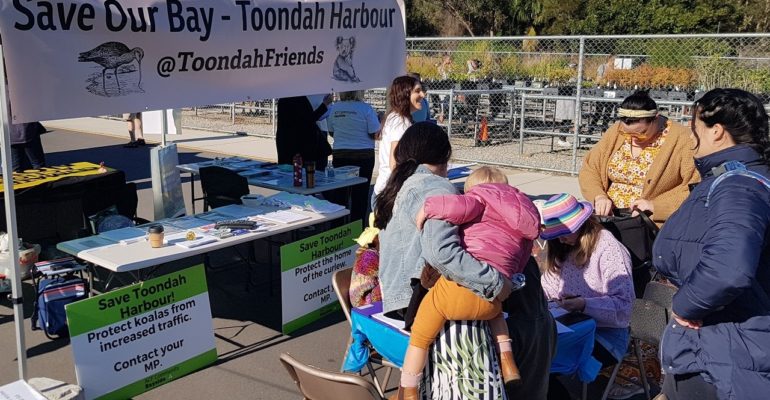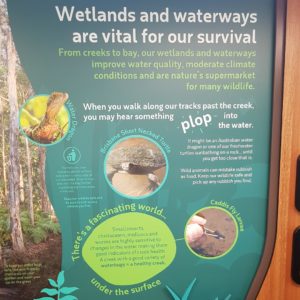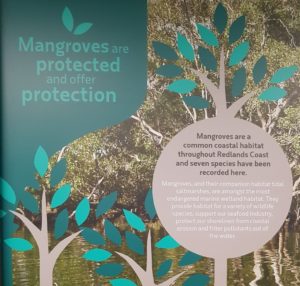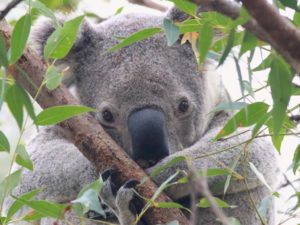
Redland City Council censorship of the community protests at Indigiscapes, questions about the Federal Government’s handling of the COVID-19 pandemic and failure to protect koalas in the Redlands are discussed in letters to Redlands2030.
Have your say by writing to theeditor@redlands2030.net
Council censorship of Toondah talk

No surprise that the Bayside branch of the Australian Conservation Foundation (ACF) was muzzled from talking to locals about the controversial $1.4 billion Toondah Harbour mega development at a recent IndigiScapes eco event.
The Redlands community has been left out of the real Toondah discussion from the start. Sadly, secrecy and ‘commercial in confidence’ barriers have been the project’s hallmarks. In the absence of honest and open consultation, local organisations like the ACF, must fill the communications void to ensure the community has enough real and honest information to weigh the benefits and risks of the largest single construction project in our history.
Superficial developer advertising campaigns focusing on waterparks, restaurants and slippery employment numbers are simply unworthy and misleading. Nowhere do they mention high-rise towers as far as the eye can see that will be built on 100 acres of protected wetlands in the Moreton Bay Marine Park.

Or that this $1.4 billion residential development will include 3,600 units to house 8,000 new residents and stretch over 20 disruptive years to build. The community should be the ones to decide whether the developer’s sweetener of a new ferry terminal is worth it. I imagine most residents would say the price is too high.
There’s also been no proper discussion of the impacts on local traffic, infrastructure, transport, schools, hospitals, future financial implications to residents – nor even the effects of climate change on such a challenging construction project on reclaimed land.
But, what is really baffling is that IndigiScapes has huge displays focusing on the importance of our wetlands to the health of our ecosystems and endangered migratory birds. Exactly the same messages as the ACF!
Time to take down those misleading displays at IndigiScapes – because Council’s actions speak much louder than words.
P.K.
Capalaba
COVID-19 Royal Commission needed
And now we had another lock down to try and save us all from COVID-19.
It is scary stuff!
The finger pointing has only just begun but the serious questions about the miserable vaccine roll out and the holes in the quarantine system need to be sorted but to date no one takes responsibility. It seems the traditions of Ministerial responsibility no longer apply….so nobody owns up, nobody resigns and nobody says sorry.
It is not easy to follow all of the tentacles of COVID-19 and most people are (rightly) more concerned with their own health and safety.
So Government failures are overshadowed and overlooked while responsibility is avoided. One feature of current political debate is the way plausible deniability is taken to new extremes. However, through it all, it is emerging that much of the blame sits with the Federal Government including what happened to the promises from last year that Australia was at the front of the queue for the new vaccines, when in fact we had only claimed rights to the least effective vaccine!
Now, with the prospects of new strains COVID-19 and or even new types of like pandemics in the wind isn’t it time we had a commitment to another Royal Commission? This time we need promises from both sides of politics to heed the recommendations.
Royal Commissions have a reputation of cutting through the secrecy and ineptitude of governments and finding out what has happened! But the big failure of Royal Commissions is the follow up and the implementation of recommendations. These failures are obvious including those arising from the Black Deaths in Custody RC, the Aged Care RC, and many more.
But if the latest lock down proves anything it is we can’t trust government with things as important as the health and well being of the people and the truth!
R.C.
Capalaba
Redland City Council fails to protect our koalas

When did you last see a koala in the Redlands?
They were quite common twenty years ago when several could be seen in virtually any bushland in the Redlands.
In 2008 the “Redlands Koala Policy & Implementation Strategy 2008 3.4.7 identified the role of this document as threefold:
1. “To provide a new vision & to meet community expectations to stop the rapid continuing decline of koalas by 2011 & take immediate action to recover the existing population to more than 5000 koalas in the Koala Coast by 2014.”
2. “To educate the whole community that Redlands habitat & its koalas are special , unique & integral to the environmental ,social , cultural & economic wellbeing of our community.”
3. “To measure, map & recognise in the State Koala Plan the unique North Stradbroke Island koala population.”
These statements, from the Redland City Council website in 2008 demonstrate, very clearly, that the Council was made fully aware of the critical state of the declining koala population but there is no evidence to suggest that any action was taken by the Council to arrest or reverse the koala population decline.
During this period, from 1997–2014, there were 2,292 koalas euthanised because they had some degree of disease.
It is now acknowledged that chlamydia is endemic to all koalas & the euthanasia program had no positive benefit to the koala population. The euthanasia programme killed more koalas than all other causes of koala deaths, showing how badly it was managed by the Council.
In 2012 the Queensland government provided $3.13 million over four years into priority areas of koala research. While an antibiotic & a vaccine are now available to treat koalas, that when used in conjunction produce a 97% recovery rate, the decline in koalas continues. Why?
Is it because the Council is not adequately funding a koala treatment program?
Koala Conservation Program Programme 2016-2021 acknowledged that the koala population has diminished, but claimed that the population is still viable and breeding in Ormiston.
While this statement may fundamentally be true, it is nothing more than maintaining the “charade” that the Council has developed over the years to explain the steady koala population decline across the Redlands.
The reality is that the vast amount of research and data collected on koalas over the years has clearly demonstrated that there are solutions to all the koala problems and they are now a management issue.
The community has the right to demand the Council provide a detailed explanation as to why the koala has not been given the full protection of the Law, as specified for all native species.
If the professional workers in our society, engineers etc. choose to do only a part of their job, as some in government are doing, we would be quickly reduced to a 3rd world nation!
D.B.
Alexandra Hills
More Opinions Expressed By Redlanders
The Toondah Harbour proposal and future generations’ questions
Heritage listing and defamation laws in letters to Redlands2030
Toondah plans provoke community reaction
Redlands2030 – 14 July 2021
Please note: Offensive or off-topic comments will be deleted. If offended by any published comment please email thereporter@redlands2030.net